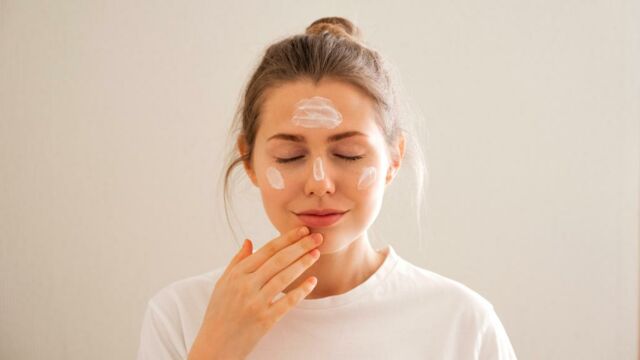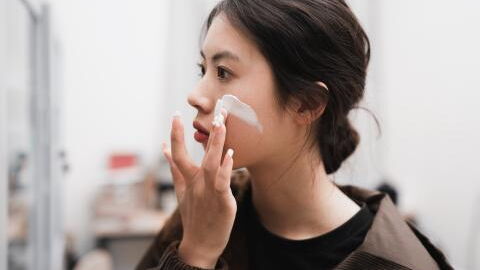When it comes to protecting your face from sun damage, sensitisation, or just making sure your products work, SPF is the key ingredient. Dermatologists, estheticians and skincare experts everywhere have been drilling it into our heads that if we aren’t using an SPF, we may as well throw our whole skincare routines out the window.
Discover our latest podcast
Despite the product being somewhat vital, many of us struggle to find a sunscreen that’s right for our skin - leading us to abandon the idea altogether. If this is you, don’t give up just yet, as we have compiled a guide to help you conquer this tricky product.
Why do we need SPF?
Sun damage is one of the leading causes of ageing in the skin; even in the winter, on a cloudy day or if you’re sitting by a window, UVA and UVB rays can penetrate the skin. These rays can then cause free radical damage, resulting in deep wrinkles, pigmentation, and loss of volume and elasticity.
To battle the sun’s effects and preserve our skin health (and maybe even our youth), we need to use sunscreen - and we need to use it every day.
Finding an SPF that’s right for you
It may sound a little cliche, but the best SPF out there is the one you will actually use. However,finding the perfect SPF is easier said than done, and it may require a bit of shopping around.
Generally, you can separate SPF into two categories, chemical and physical. Chemical SPF works to absorb the sun’s UV rays and break them down into heat. Meanwhile, physical sunscreen works to reflect the UV rays off the face, so it doesn’t interfere with your skin in the first place.
When deciding which of these product types to go for, it’s wise to consider each’s pros and cons.
Pros of chemical sunscreen
- The weight of the product is often thinner and less oily.
- It tends to be more resistant to water.
Cons of chemical sunscreen
- It can sting your face if it gets into your eyes.
- Often more irritating to the skin.
- Chemical SPF often needs to be applied at least 20 minutes before sun exposure for maximum product absorption.
- It can be harmful to coral reefs (this is often debated, but some people prefer to be cautious).
Pros of physical sunscreen
- It is effective against the sun as soon as it’s applied to the skin.
- Some find this type of SPF to be less irritating.
- Potentially less harmful to coral reefs.
Cons of physical sunscreen
- As physical SPF often sits on the skin instead of being absorbed, it can be easily wiped off.
- Often leaves a white cast.
Taking these points in tow, those who have darker skin tones may be better off opting for a chemical sunscreen, while those who have sensitive or acne-prone skin may prefer to go for a physical one. Many brands also cater their SPF’s to different skin types, offering hydrating, oil-free or non-comedogenic formulas. But, no matter which category you choose to go with, it’s essential to make sure your SPF protects against both UVA and UVB rays.
Finding a formula that’s perfect for you may take some time, but an SPF that you both enjoy and fits your budget is the one you’re most likely to use. Remember, your SPF isn’t doing you any good if it’s sitting on your shelf.
How to apply SPF
When applying sun protection, the American Academy of Dermatology recommends people use ¼ teaspoon of SPF just for their face and neck - that’s about two fingers worth.
The reason behind the generous serving is that the less product you put on the skin, the less sun protection is offered. That means if you put on a very light layer of your SPF 50, you’re probably more likely to get a protection rating of around 20 or 30.
Reapplying your sunscreen
Applying your SPF doesn’t stop there. To get the best protection, you should reapply your SPF multiple times throughout the day, more specifically, every two to four hours.
As chemical filters work to break down UV rays and convert them into heat it slowly gets used up and degrades over time. The more time you spend in the sun or sitting next to a window, the faster these UV filters get used up, so to ensure your skin is protected all day, you really will need to reapply regularly.
Those opting for a physical sunscreen aren’t exempt from reapplying either. This type of SPF tends to sit on the skin, reflecting away UV rays, meaning it is often gets wiped or washed away. Additionally, the even layer you may have applied in the morning will have broken and clumped up over the hours due to sweat and sebum.
When it comes to reapplying sunscreen over your makeup, SPF sprays are the best way to go. These spray-on filters will enable sun protection without having to remove and repaint your face. Still, you’ll need to be able to use a ¼ teaspoon; a light dusting won’t be enough for optimum cover. Instead, slowly apply the spray layer by layer so that your makeup doesn’t run.
By finding the right SPF for you, using at least a ¼ teaspoon and remembering to reapply it throughout the day, your skin will stay healthier for longer.















